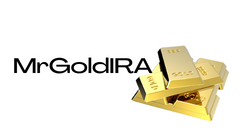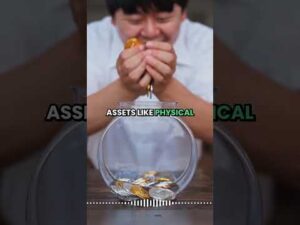Are you ready to dive into the transformative world of digital asset tax legislation? Today, U.S. Senator Cynthia Lummis (R-WY) has set the stage for a significant shift in the crypto landscape by introducing groundbreaking legislation that promises to revolutionize how we perceive and utilize Bitcoin and other cryptocurrencies. Let's unravel the key highlights of this game-changing initiative.
The Birth of Innovation: Lummis' Vision Unveiled
A New Era for Digital Assets
Senator Lummis is not merely introducing a bill; she's laying the foundation for a more inclusive and innovation-friendly digital economy. By simplifying tax regulations and embracing the dynamic nature of digital technologies, this legislation aims to empower users and foster a thriving environment for crypto advancements.
Breaking Down the Bill: What You Need to Know
The De Minimis Exemption
One of the most significant aspects of the proposal is the de minimis exemption, offering relief by excluding minor digital asset gains or losses from taxation. With limits set at $300 per transaction and $5,000 annually, this provision paves the way for a more accessible and tax-friendly crypto landscape.
Redefining Tax Treatment for Digital Assets
Aligning with the norms of traditional securities and commodities, the bill ensures that crypto lending is not treated as a sale, thereby enhancing capital efficiency and promoting fair taxation practices. By implementing the 30-day wash sale rule, the legislation aims to create a level playing field across various asset classes.
Empowering Traders with Fair Market Value Recognition
Through the option of mark-to-market tax treatment, digital asset dealers and traders can now accurately recognize income based on fair market value. This move eliminates bias based on asset type and ensures a more equitable taxation process for all stakeholders.
Paving the Way for Growth and Contribution
By deferring taxation on mining and staking activities until assets are sold, the bill alleviates the burden of unrealized income tax. Moreover, by simplifying appraisal requirements for charitable donations of digital assets, the legislation encourages contributions to crypto nonprofits, mirroring the treatment of publicly traded stock donations.
A Glimpse into the Future: Revenue Projections
Financial Impact and Beyond
According to the Congressional Joint Committee on Taxation, the legislation is poised to generate approximately $600 million in net revenue from 2025 to 2034. This forecast not only underscores the financial implications but also highlights the broader implications of this forward-looking tax reform.
Join the Conversation: Shaping the Future Together
Your Voice Matters
Senator Lummis values public input and encourages constructive feedback to shape a fair and progressive approach to digital assets. Your insights can play a pivotal role in steering this legislation towards the President's approval. Let's engage, collaborate, and pave the way for a brighter future in the digital asset realm.
Excited to delve deeper into the realm of digital asset tax legislation? Explore the full article on Bitcoin Magazine.
Frequently Asked Questions
What is a gold IRA account?
Gold Ira accounts are tax-free investment vehicles for people who want to invest in precious metals.
You can purchase gold bullion coins in physical form at any moment. To start investing in gold, it doesn't matter if you are retired.
An IRA lets you keep your gold for life. Your gold holdings will not be subject to tax when you are gone.
Your gold is passed to your heirs without capital gains tax. Because your gold doesn't belong to the estate, it's not necessary to include it on your final estate plan.
You'll first have to set up an individual retirement account (IRA) to open a gold IRA. Once you've done that, you'll receive an IRA custody. This company acts like a middleman between the IRS and you.
Your gold IRA custodian can handle all paperwork and submit necessary forms to IRS. This includes filing annual reports.
After you have established your gold IRA you will be able purchase gold bullion coin. Minimum deposit required is $1,000 If you make more, however, you will get a higher interest rate.
Taxes will be charged on gold you have withdrawn from an IRA. If you take out the whole amount, you'll be subject to income taxes as well as a 10 percent penalty.
Even if your contribution is small, you might not have to pay any taxes. There are exceptions. For example, taking out 30% or more of your total IRA assets, you'll owe federal income taxes plus a 20 percent penalty.
Avoid taking out more that 50% of your total IRA assets each year. If you do, you could face severe financial consequences.
What precious metals can you invest in for retirement?
These precious metals are among the most attractive investments. Both are easy to sell and can be bought easily. Consider adding them to the list if you're looking to diversify and expand your portfolio.
Gold: One of the oldest forms of currency, gold, is one of mankind's most valuable. It is stable and very secure. Because of this, it's considered a good way to preserve wealth during times of uncertainty.
Silver: Silver has been a favorite among investors for years. This is a great choice for people who want to avoid volatility. Silver tends to move up, not down, unlike gold.
Platinium: Platinum is another form of precious metal that's becoming increasingly popular. It is very durable and resistant against corrosion, much like silver and gold. However, it's much more expensive than either of its counterparts.
Rhodium. Rhodium is used as a catalyst. It is also used as a jewelry material. And, it's relatively cheap compared to other types of precious metals.
Palladium (or Palladium): Palladium can be compared to platinum, but is much more common. It is also cheaper. It's a popular choice for investors who want to add precious metals into their portfolios.
What is the tax on gold in an IRA
The tax on the sale of gold is based on its fair market value when sold. When you purchase gold, you don't have to pay any taxes. It is not considered income. If you sell it later, you'll have a taxable gain if the price goes up.
For loans, gold can be used to collateral. Lenders look for the highest return when you borrow against assets. For gold, this means selling it. However, there is no guarantee that the lender would do this. They may just keep it. They might decide that they want to resell it. You lose potential profits in either case.
To avoid losing money, only lend against gold if you intend to use it for collateral. You should leave it alone if you don't intend to lend against it.
How is gold taxed by Roth IRA?
An investment account's tax is calculated based on the current value of the account, and not on what you paid originally. If you invest $1,000 into a mutual fund, stock, or other investment account, then any gains are subjected tax.
You don't pay tax if you have the money in a traditional IRA/401k. Capital gains and dividends earn you no tax. This applies only to investments made for longer than one-year.
The rules that govern these accounts differ from one state to the next. Maryland requires that you withdraw funds within 60 business days after reaching the age of 59 1/2. In Massachusetts, you can wait until April 1st. And in New York, you have until age 70 1/2 . To avoid any penalties, plan your retirement savings and take your distributions as early as possible.
What are the benefits of a gold IRA
There are many advantages to a gold IRA. It can be used to diversify portfolios and is an investment vehicle. You decide how much money you want to put into each account, and when you want it to be withdrawn.
You have the option of rolling over funds from other retirement account into a gold IRA. This is a great way to make a smooth transition if you want to retire earlier.
The best part about gold IRAs? You don't have to be an expert. They're readily available at almost all banks and brokerage firms. You don't have to worry about penalties or fees when withdrawing money.
There are, however, some drawbacks. The volatility of gold has been a hallmark of its history. Understanding why you invest in gold is crucial. Are you looking for safety or growth? Is it for insurance purposes or a long-term strategy? Only then will you be able make informed decisions.
If you want to keep your gold IRA open for life, you might consider purchasing more than one ounce. A single ounce will not be sufficient to meet all your requirements. Depending on your plans for using your gold, you may need multiple ounces.
You don't need to have a lot of gold if you are selling it. You can even live with just one ounce. You won't be capable of buying anything else with these funds.
Can I hold physical gold in my IRA?
Gold is money. Not just paper currency. People have used gold as a currency for thousands of centuries to preserve their wealth and keep it safe from inflation. Investors today use gold to diversify their portfolios because gold is more resilient to financial turmoil.
Many Americans now invest in precious metals. Although owning gold does not guarantee that you will make money investing in it, there are many reasons to consider adding gold into your retirement portfolio.
Gold has historically performed better during financial panics than other assets. Gold prices rose nearly 100 percent between August 2011 and early 2013, while the S&P 500 fell 21 percent over the same period. During turbulent market conditions gold was one of few assets that outperformed stock prices.
One of the best things about investing in gold is its virtually zero counterparty risk. You still have your shares even if your stock portfolio falls. But if you own gold, its value will increase even if the company you invested in defaults on its debt.
Finally, gold is liquid. This means you can easily sell your gold any time, unlike other investments. Because gold is so liquid compared to other investments, buying it in small amounts makes sense. This allows for you to benefit from the short-term fluctuations of the gold market.
How much should precious metals make up your portfolio?
To answer this question, we must first understand what precious metals are. Precious metals refer to elements with a very high value relative other commodities. This makes them highly valuable for both investment and trading. Gold is by far the most common precious metal traded today.
However, many other types of precious metals exist, including silver and platinum. The price for gold is subject to fluctuations, but stays relatively stable in times of economic turmoil. It is not affected by inflation or deflation.
As a general rule, the prices for all precious metals tend to increase with the overall market. That said, they do not always move in lockstep with each other. If the economy is struggling, the gold price tends to rise, while the prices for other precious metals tends to fall. Investors expect lower interest rates which makes bonds less appealing investments.
Contrary to this, when the economy performs well, the opposite happens. Investors prefer safe assets such as Treasury Bonds and demand fewer precious metals. Because they are rare, they become more pricey and lose value.
Diversifying across precious metals is a great way to maximize your investment returns. You should also diversify because precious metal prices can fluctuate and it is better to invest in multiple types of precious metals than in one.
Statistics
- You can only purchase gold bars at least 99.5% purity. (forbes.com)
- If you accidentally make an improper transaction, the IRS will disallow it and count it as a withdrawal, so you would owe income tax on the item's value and, if you are younger than 59 ½, an additional 10% early withdrawal penalty. (forbes.com)
- (Basically, if your GDP grows by 2%, you need miners to dig 2% more gold out of the ground every year to keep prices steady.) (smartasset.com)
- Indeed, several financial advisers interviewed for this article suggest you invest 5 to 15 percent of your portfolio in gold, just in case. (aarp.org)
- Instead, the economy improved, stocks rebounded, and gold plunged, losing 28 percent of its value in 2013. (aarp.org)
External Links
investopedia.com
- Do You Need a Gold IRA to Get Retirement?
- What are the Options? Types, Spreads, Example, and Risk Metrics
law.cornell.edu
- 7 U.S. Code SS7 – Designation Boards of Trade as Contract Markets
- 26 U.S. Code SS 408 – Individual retirement plans
cftc.gov
forbes.com
- Gold IRA – Add Sparkle to Your Retirement Nest Egg
- Understanding China's Evergrande Crisis – Forbes Advisor
How To
A growing trend: Gold IRAs
The gold IRA trend is growing as investors seek ways to diversify their portfolios while protecting against inflation and other risks.
Owners of the gold IRA can use it to invest in physical bars and bullion gold. It can be used as a tax-free way to grow and it is an alternative investment option for people who are not comfortable with stocks or bonds.
An investor can use a gold IRA to manage their assets and not worry about market volatility. The gold IRA can be used to protect against inflation or other potential problems.
Investors also have the benefit of physical gold, which has unique properties such durability, portability and divisibility.
Additionally, the gold IRA has many benefits. It allows you to quickly transfer your gold ownership to your heirs. The IRS doesn't consider gold a commodity or currency.
This means that investors who are looking for financial safety and security are becoming more interested in the gold IRA.
—————————————————————————————————————————————————————————————-
By: Oscar Zarraga Perez
Title: Discover Senator Lummis' Game-Changing Move with New Digital Asset Tax Law
Sourced From: bitcoinmagazine.com/news/senator-lummis-introduces-digital-asset-tax-legislation
Published Date: Thu, 03 Jul 2025 19:15:16 +0000

















